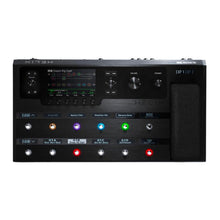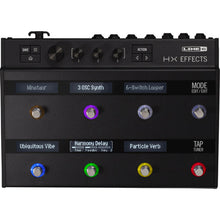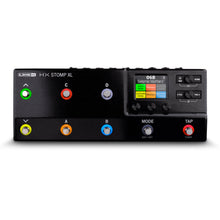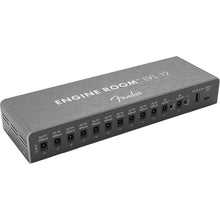Pedals & Effects
Pedals & Effects For Sale at The Music Zoo
Buy Pedals & Effects online now from The Music Zoo! We have a great selection of guitar gear available for purchase in our Pedals & Effects product collection. Awesome customer service and secure checkout are always included with your purchase. The products listed for sale in this collection are ready to ship immediately, with expedited delivery options available. If you're looking to make monthly payments, financing options for your Pedals & Effects order are available on checkout. Your satisfaction is always our top priority, so we offer a no hassle return option on every item we sell.
About Our Pedals & Effects Product Catalog
Every player looks for new sources of inspiration, and more often than not, it's found in a guitar pedal! The Music Zoo's vast selection of guitar and bass pedals and effects will help you complete your pedal board. Whether you're just looking for a simple Boss or Dunlop classic or a boutique hand-built effect that will set your tone apart from the others, we're the destination with the best mix of the unique and the everyday must-haves. Buy your next pedal online at The Music Zoo or visit our New York showroom to shop today - we're an authorized dealer for all your favorite pedal brands!
Pedals & Effects History
While most early guitar "effects" themselves were generally built into the amp directly, in 1948, DeArmond produced the first standalone tremolo effect, known as the Trem Trol 800. Other early standalone effects appeared in the late '50s and early '60s such as the WEM Copicat delay and echo pedal, and the Maestro Fuzz Tone, which was the first commercially available distortion pedal.
The first "Wah Wah" pedal arrived soon after in 1967, a Vox/Thomas Organ creation. Univox also introduced the Uni-Vibe in 1968 which combined phase shift and chorus effects. The Arbiter Fuzz Face, made famous by Jimi Hendrix, also appeared around this time, as well as the Electro-Harmonix LPB-1 which eventually evolved into the Big Muff.
In the '70s, new effect types started to hit the market. The ever funky Mu-tron envelope filter, phaser, and octave pedals were a huge hit in this decade. The first official Big Muff was a product of the '70s as well, along with the now classic Boss DS-1, Ibanez Tubescreamer, and MXR Phase 90. New flanger, phaser, and chorus effects also arrived and ushered in '80s with some help from Eddie Van Halen and his ADA Flanger.
In the '80s, there was a shift from analog to digital in all aspects of electronics, and guitar effects began to take the form of rackmount multi-effects processors. Units such as the ADA MP-1, Roland GP-6, Alesis Midiverb, and Tom Scholz Rockman effects saw a ton of use and were very popular.
While the '90s saw the continued improvement of digital effects such as the now legendary Digitech Whammy harmonizer pedal, the grunge music assault also helped to re-popularize analog effects. It was during this era that the modern "pedal board" was popularized. Players would simply chain together a variety of analog stomp boxes and plug in to a clean amp.
Today, the guitar pedal market has expanded exponentially, with the internet age making it easier for an aspiring builder to create their own brand. The classics are often copied, but new effect types have also arisen in the modern era, including synth inspired effects, looper pedals, and high-gain heavy metal ready distortion pedals as well.
Pedals & Effects Types
Overdrive / Boost / Fuzz / Distortion
A large cross-section of the guitar effect market is dedicated to pedals that give your clean amp everything from just a little more attitude to a complete transformation into a high gain beast. Overdrive and Boost pedals help push the front end of your amp and add grit or simply more "clean" volume. These pedals can be useful if you have lower output pickups or a lower gain amp, and need to get distortion at lower volumes.
Distortion and fuzz pedals operate in the same general sense but add much more gain and usually add specific tonal colors to your sound. Distortion pedals typically find there way into metal genres, while Fuzz effects have found more of a home with musicians who play alternative rock, punk, or music that doesn't require the tight response that distortion pedals usually produce.
Wah
The first widely known wah pedals surfaced in the late '60s in the UK and California, conceived by an employee of the Thomas Organ Company and marketed by Vox. True to their name, these "Cry Baby" pedals produce a "wah wah" "sweeping" sound and are controlled by a foot pedal. Thomas Organ neglected to file a trademark on the Cry Baby name though, and eventually Dunlop used and popularized it even further. Wah wah pedals are heavily used by funky and rock players.
Delay / Reverb
Delay and Reverb effects are often referred to as "time-based" effects. Delay pedals literally add a "delay" to the guitar signal which produces duplicate notes or an echo-like effect. Reverb pedals work in a similar fashion, except they create a large number of echos that fade away at a rate set by the pedal, to create a "hallway" or "cathedral-like effect. The effect is not only used for electric guitar, but for studio processing as well, to add depth and ambiance.
Tremolo / Vibrato
One of the first and simplest yet most beloved guitar effects is the tremolo effect. Often confused with vibrato, the tremolo does not bend pitch, it just produces rapid variations of volume to create a "stuttering" sound. Vibrato effects on the other hand, do produce slight "note-bending" sounds that can vary in depth depending on the settings of the pedal, and are similar to how a guitar's "whammy bar" or "tremolo arm" would work.
Phaser / Chorus / Flanger
The modulation family of effects generally refers to these three favorites. A Phaser or phase shifter is an effect that essentially splits the audio signal in two, offsets it, and amplifies certain frequencies of each signal as it sweeps through them, creating a ripple-like effect at the speed of your choice. A chorus pedal was designed to mimic orchestras and choirs, creating slight pitch and timbral differences around the original notes played, to create a thicker and more harmonically rich sound. Generally a chorus sound will also include a vibrato or tremolo effect and slight delay. Lastly, a flanger pedal produces a sound often characterized as a jet plane "whoosh", and was developed during a recording. Audio was tracked on two tapes simultaneously, but one edge of the tape reel or "flange" was pushed down, causing that tape to slow down. When the tracks were combined, the effect appeared!
Pitch Shifting
Pitch shifting pedals appear in 2 main forms - those that shift your tone an octave up or down, or those designed to harmonize the inputted note with tones at other smaller intervals. These pedals can be useful for a single guitarist who needs to create harmony effects, or maybe hold down some low end bass tones on their own.






































